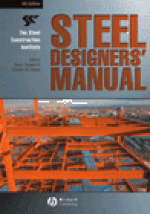Tab Article
This classic manual on structural steel design provides a major source of reference for structural engineers and fabricators working with the leading construction material. Based fully on the concepts of limit state design, the manual has been revised to take account of the 2000 revisions to BS 5950. It also looks at new developments in structural steel, environmental issues and outlines the main requirements of the Eurocode on structural steel.


